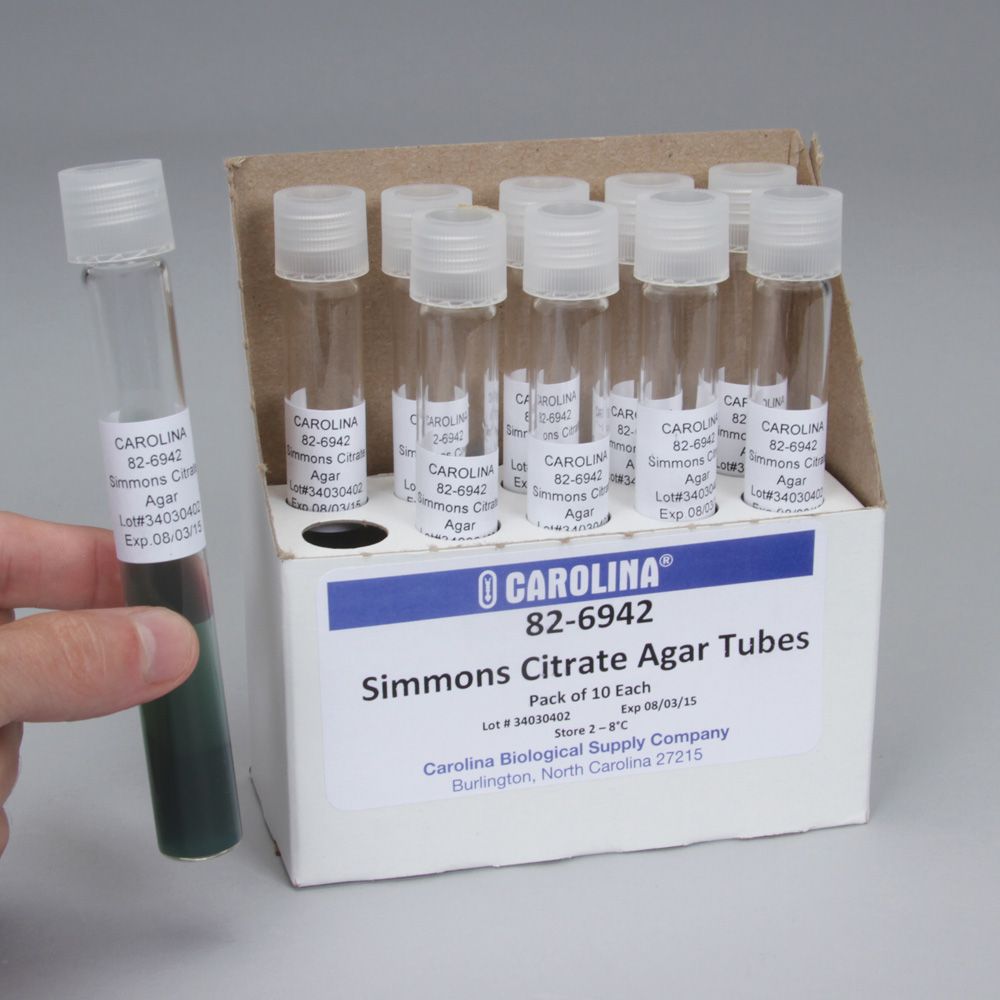My Cart
Your Shopping Cart is currently empty. Use Quick Order or Search to quickly add items to your order!

In this lab students perform a test on two different bacteria to determine whether the organisms can use citric acid as their sole carbon source. The citrate test is often performed as part of the IMViC (Indole, Methyl Red, VogesProskauer, and Citrate) series of tests used to differentiate common species of enteric bacteria.
This activity assumes that students have previously worked with bacteria and are familiar with sterile technique. It also assumes they have a basic knowledge of pH. If this is not the case, we recommend that students complete the activities described in our “Introduction to Sterile Technique” LabSheet before beginning this activity.
Citrobacter freundii, tube culture (154941)
Escherichia coli, tube culture (155065)
Simmons Citrate Agar, slant, prepared media tubes (826942)
Bunsen burners or alcohol lamps
disinfectant (e.g., 70% ethanol, Lysol®, bleach solution)
Optional
Materials If you have an autoclave, you can prepare your own agar slants using Simmons Citrate Agar Dehydrated Medium (787040).
Ensure that students understand and adhere to safe laboratory practices when performing any activity in the classroom or lab. Demonstrate the protocol for correctly using the instruments and materials necessary to complete the activities, and emphasize the importance of proper usage. Model proper laboratory safety practices for your students and require them to adhere to all laboratory safety rules.
This activity requires that students work with bacterial cultures and open flames. Have students use sterile technique at all times and wear appropriate safety equipment (such as safety glasses or goggles, gloves, and aprons). Have them wipe down all work surfaces with disinfectant before and after the lab, and wash their hands after entering and before exiting the lab. Disinfect cultures and any contaminated items remaining at the end of the lab by autoclaving them or by flooding them with disinfectant overnight before proper disposal.
Students can work singly or in pairs at stations.
Set up workstations for inoculating the Simmons Citrate tubes. Stock each station with the following materials:
bacterial cultures in test tube racks
Bunsen burner (or alcohol lamp)
inoculating loop
Set up a separate workstation where students can pick up the Simmons Citrate Agar.
Incubate the plates at 37°C. If you do not have an incubator, the plates can be incubated at room temperature. Examine the tubes for results at 24-hour intervals. Growth of the bacteria and a change of the medium to dark blue together indicate a positive test. No growth and no color change indicate a negative test result. The tubes should be ready for use 2 or 3 days after inoculation.
To explore the topic in greater depth, see our Enteric Biochemical Detective Kit (154717).
What would a color change of the medium from green to blue indicate?
A color change from green to blue would indicate that the pH of the medium has increased.
What inference can you draw from this color change?
Citrate is being metabolized.
Describe the initial and final appearance of the Simmons Citrate Agar, in terms of color and observed growth (if any), for each bacteria.
Citrobacter freundii
Initial color: The medium is green.
Final color: The medium is blue around visible growth of bacteria on the agar.
Escherichia coli
Initial color: The medium is green.
Final color: The medium is green and there is no visible bacterial growth on the agar.
According to your results, which, if either of the bacteria is able to use citrate as its sole carbon source?
Citrobacter freundii